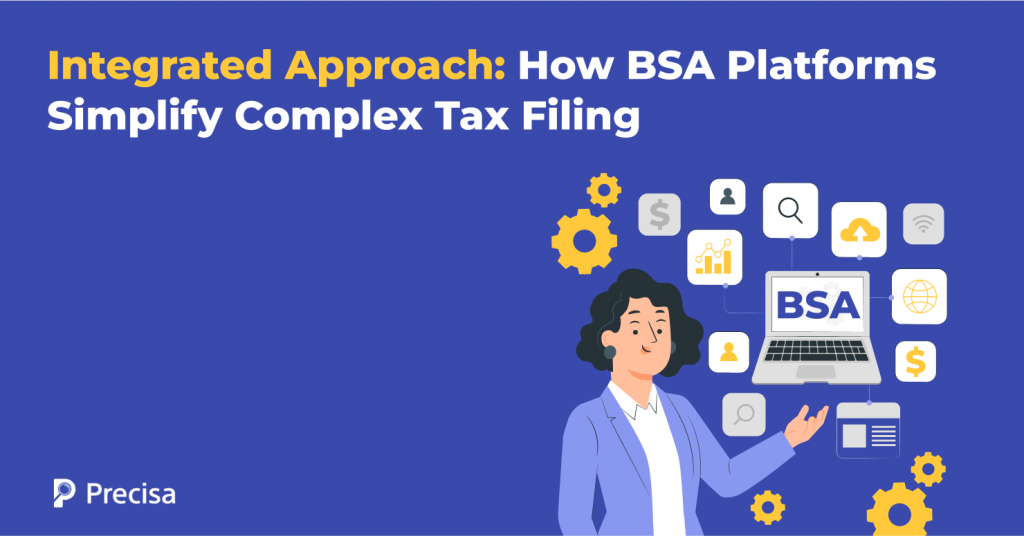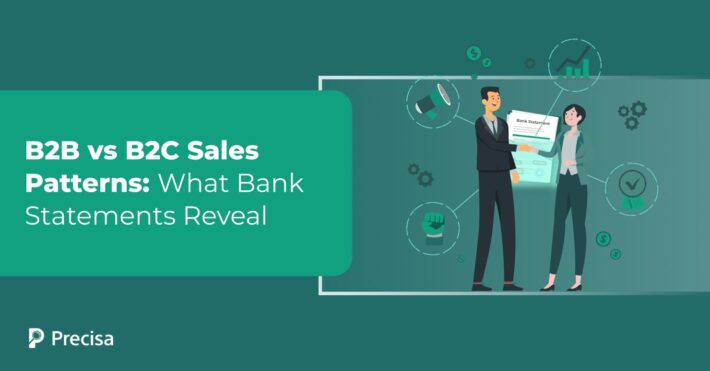How Bank Statement Analysers Simplify Complex Tax Filing

According to the president of ICAI, Mr. Ranjeet Agarwal, India’s chartered accountants issue around 1.5 crore income tax filing certifications annually.
Tax professionals spend 25 hours weekly on compliance and handle 400-500 complaints yearly, which underscores their crucial role in ensuring thorough compliance.
However, the complexity of tax filing has surged due to rapid regulatory changes, such as updated income tax slabs and extended deadlines for filing returns, effective April 1, 2025.
For tax professionals managing multiple client portfolios, the challenge is compounded by the rapid adoption of digital banking, the increasing rate of cybercrimes, rigorous data security requirements, and the risk of penalties for non-compliance.
To address these challenges, automated bank statement analysis (BSA) platforms offer an integrated solution. Let’s explore how these tools simplify the existing process.
What Tax Filing Issues Do CAs Encounter?
CAs often face numerous obstacles when processing banking data for tax filing:
Risk of Penalties
Manual data entry increases the likelihood of mistakes (approx. 5% to 8%), leading to potential penalties and compliance issues. In FY 2022-23, one-third of tax notices were issued due to mismatches between reported banking transactions and actual account activity, according to the Income Tax Department.
Information Overload
The average accountancy firm handles between 50-200 clients, with each client potentially having multiple bank accounts generating thousands of transactions annually.
This translates to approximately 250,000-1,000,000 transactions that need review during peak filing season.
Time-Consuming and Resource Intensive
On average, accountants spend 5.3 hours manually analysing and categorising transactions and detecting financial data errors per week.
This equates to hundreds of billable hours spent on rigorous administrative work rather than strategic advisory services.
Multiple Platform Coordination
Most CA firms use 4–7 different software platforms to complete a single tax filing, from accounting software and spreadsheets to GST portals and income tax utilities, increasing the risk of data transfer errors and inconsistencies.
Documentation Challenges
Almost all clients submit bank statements in PDF format, requiring manual data extraction. These statements vary across 40+ Indian banks, each with unique layouts and transaction descriptions.
Time Pressure and Increased Stress
With tightened compliance windows and increasing client expectations, around 80% of tax professionals report working extensive overtime during tax season to meet deadlines.
How Do Bank Statement Analysis Platforms Work?
Bank statement analysis platforms offer end-to-end tax-filing solutions to these challenges. Here are the key functions:
Processes Data Using AI
Innovative AI-based bank statement analysers automatically extract, categorise, and analyse financial data from various sources, including unstructured data like contracts, within minutes, thereby eliminating manual data entry and reducing human error.
Integrates Tax Filing
These tools create a bridge between banking data, accounting software, and tax filing platforms, such as TallyPrime or ClearTax, to streamline the entire process flow.
Offers Cloud Computing
Cloud-based infrastructure of modern BSA platforms allows CAs to access client financial information from anywhere while maintaining strict data security protocols.
Automates Compliance
Built-in regulatory intelligence helps identify potential compliance issues before submission, substantially reducing the risk of penalties and notices.
Key Features for Tax Preparation
Advanced BSA tools offer automated transaction mapping to GST categories, reconciliation with Form 26AS for TDS compliance, and real-time fraud detection.
Provides Data Security
Advanced encryption and in-built security checks ensure client financial information remains confidential and protected against unauthorised access.
Ensures Tax Intelligence
Specialised algorithms detect potential tax-saving opportunities by analysing spending patterns and financial behaviours by scanning the client’s transaction history across bank transactions, UPI payments, ecommerce purchases, and more.
7 Ways BSA Platforms Simplify Tax Filing for CAs
Modern bank statement analysis platforms revolutionise tax filing through several key functionalities:
1. Automated Data Aggregation and Accuracy
BSA tools Automate data collection from multiple sources, minimising manual entries. Key features include:
- Automated Data Extraction: Extracts transactions from PDFs, Excel, and scanned images with 99% accuracy, eliminating manual entry.
- AI-based Classification: Recognises and categorises income, expenses, and deductions per Indian tax codes, improving over time.
- Intelligent Tax Mapping: Maps transactions to GST and income tax categories using narration analysis and historical patterns.
- TDS Reconciliation: Flags and reconciles TDS transactions with Form 26AS, streamlining verification.
2. Seamless GST and Income Tax Filing
BSA platforms create efficiency bridges between banking data and tax filing requirements:
- Auto-Updates on Deadlines: Provides automatic notifications for upcoming GST filing deadlines based on client registration details.
- Discrepancy Identification: Flags potential discrepancies between reported GST transactions and actual bank statement entries.
- Pre-Filled ITR Forms: Reduces preparation time with AI-powered tax calculations and pre-filled Income Tax Return forms.
- Data Import/Export: Enables seamless data transfer with direct integration with common accounting software.
- Input Tax Credit Verification: Streamlines verification through transaction tagging and cross-reference capabilities to ensure accurate claims.
3. Enhanced Financial Analysis for Tax Planning
Beyond compliance, BSA platforms enable more strategic advisory services:
- Tax-Saving Opportunities: Through sophisticated pattern analysis of spending patterns and business cycles, the tools help identify potential tax-saving opportunities.
- Audit Trigger Detection: Flags transactions that might trigger audit scrutiny before submission, allowing for proactive documentation and justification.
- Cash Flow Visualisation: Supports tax payment scheduling through clear cash flow insights.
4. Compliance Alerts and Real-Time Updates
Some platforms help accountants stay current with regulatory changes through:
- Proactive Alerts: Notifies CAs of upcoming deadlines for compliance obligations and TDS, GST, and corporate tax filings.
- Automated Verification: Provides in-built checks aligned with Indian regulations like Form 3CD requirements.
5. Secure Cloud Storage and Anytime Access
The tools help improve data security and accessibility through:
- Bank-Grade Encryption: Protects financial data with secure cloud storage that meets global data protection standards.
- Role-Based Access Control: Allow team members to access only the information necessary for their specific responsibilities.
- Mobile Accessibility: Allows CAs to review, approve, and query transactions even when they are away from their office, improving client responsiveness.
6. Comprehensive Audit Trail and Resource Optimisation
BSA platforms generate a transparent, automated audit trail that logs every transaction and modification, making it easier to track changes, identify errors, and prepare for audits:
- 80% Reduction in Manual Data Entry: Frees up tax professionals for high-value advisory services.
- Batch Processing Capabilities: Enable handling multiple clients simultaneously during tax filing season without downtime.
- Fewer Client Follow-Ups: Uses automated data collection and flags only unusual transactions for review.
7. Scalability for Practice Growth
A growing client base shouldn’t mean an overwhelming tax filing workload. BSA platforms help scale effortlessly by:
- Peak Season Efficiency: Manages higher client loads without increasing staff or infrastructure, enabling cost-effective growth.
- Standardised Processing: Ensures consistent quality, regardless of client volume or complexity.
- High-Net-Worth Client Support (HNWIs): Handles complex banking transactions with advanced categorisation.
Key Takeaway
Tax filing, if done manually, is a tedious task. In addition, errors in data entry, misplaced information, and human errors make it expensive.
The future of tax filing is AI-driven, automated, and integrated. With regulatory complexities and digital banking transactions increasing, CAs must make smart choices to stay competitive.
The “Big 4” accounting firms—Deloitte, Ernst & Young (EY), PwC, and KPMG—have led the way with technology adoption, investing heavily in AI-powered tools and solutions.
For instance, Deloitte’s automated document review platform uses cognitive technologies that fit into their practitioners’ existing workflows, allowing them to evaluate entire populations of contracts to find key information.
Similarly, Precisa offers an array of cloud-based analytics solutions that help chartered accountants simplify tax filing and improve compliance.
Tools and features such as automated bank statement analysis, GST reconciliation, real-time compliance tracking, and secure cloud storage can help chartered accountants and taxation firms to:
- Automate financial data extraction, consolidation, and organisation needed for tax preparation.
- Identify key financial metrics for tax planning and compliance in real-time.
- Get a reliable overview of a client’s current financial performance by combining transaction data with other financial information to identify areas to save taxes.
Book a demo today to learn more!




